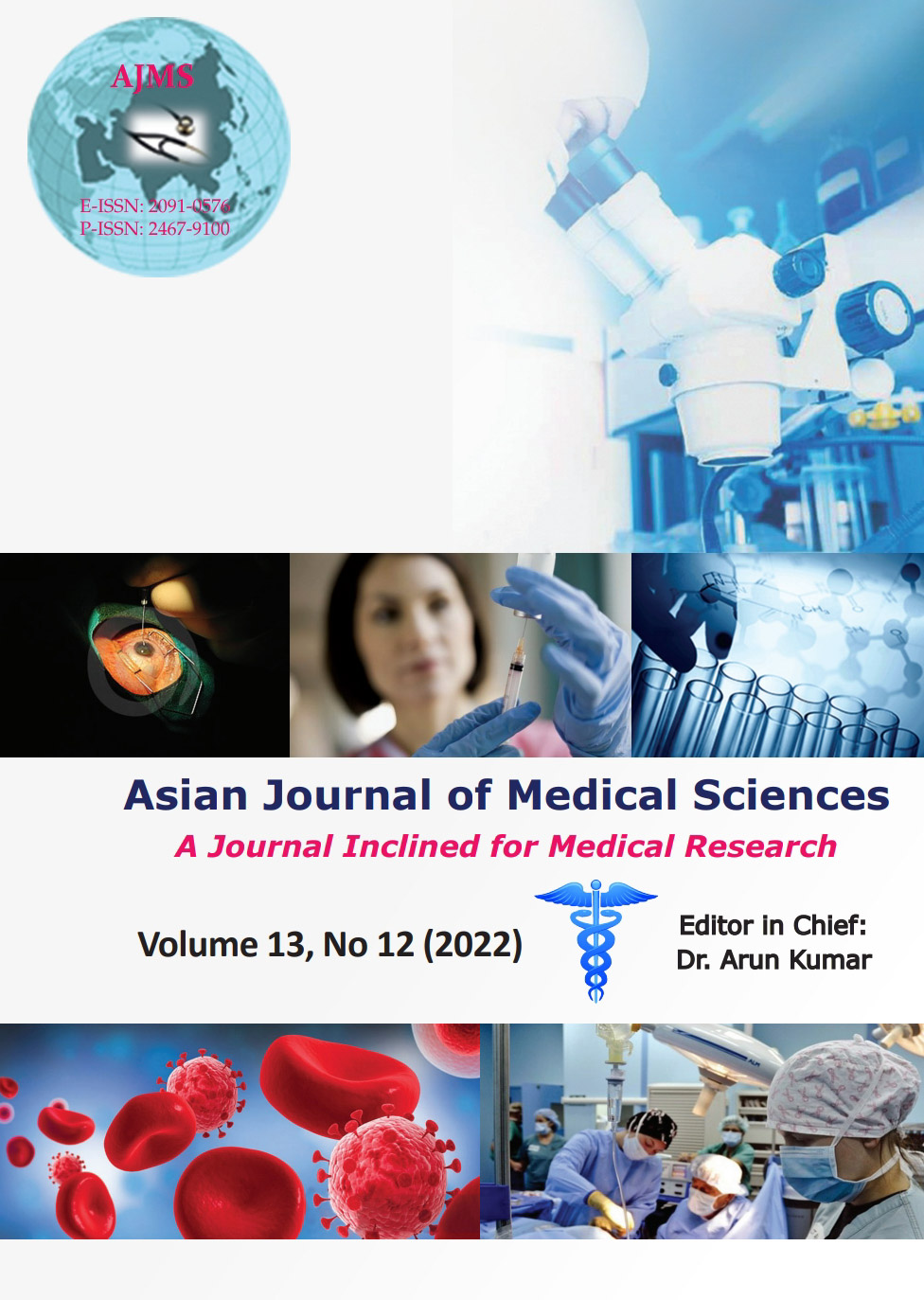Neonatal versus postneonatal presentation of intestinal malrotation: A retrospective cross-sectional study in a tertiary care hospital at Hyderabad, India
Keywords:
Bilious vomiting; Intestinal malrotation; Ladd’s procedureAbstract
Background: Malrotation commonly presents in neonates with bilious vomiting. It may also present in post neonatal age group with vague symptoms such as chronic abdominal pain, vomiting, and failure to thrive. These indistinct symptoms also result in delay of diagnosis.
Aims and Objectives: This study is done with an objective to know whether age of presentation in malrotation determines morbidity and mortality.
Materials and Methods: This is a retrospective study conducted in Gandhi medical college and Hospital, Hyderabad, from 2017 to 2020, based on the records of 50 patients who were diagnosed to have malrotation. The differences in clinical presentations, diagnosis, management, and outcomes were analyzed with respect to age.
Results: Children who presented in neonatal period had classical symptoms (P<0.00001) and early diagnosis (P<0.0239). Children who presented later (>1 month of age) had higher incidence of atypical symptoms (P<0.00001) and delay in diagnosis (P<0.0239) compared to neonatal age group. Plain X-ray abdomen is readily diagnostic in neonatal age group (P<0.0004) and diagnosis was confirmed by contrast study, whereas in older children, plain abdomen X-ray findings were not always distinct and most of them needed contrast series to reach definitive diagnosis. The incidence of bowel gangrene and mortality was not statistically significant (P value of 1) between neonatal and post neonatal groups.
Conclusion: In post neonatal age group, lack of classical presentation may lead to difficulty in diagnosing malrotation, but may not have significant difference in terms of morbidity and mortality. Considering malrotation early in differential diagnosis leads to timely intervention even in older age group children.
Downloads
Downloads
Published
How to Cite
Issue
Section
License
Copyright (c) 2022 Asian Journal of Medical Sciences

This work is licensed under a Creative Commons Attribution-NonCommercial 4.0 International License.
Authors who publish with this journal agree to the following terms:
- The journal holds copyright and publishes the work under a Creative Commons CC-BY-NC license that permits use, distribution and reprduction in any medium, provided the original work is properly cited and is not used for commercial purposes. The journal should be recognised as the original publisher of this work.
- Authors are able to enter into separate, additional contractual arrangements for the non-exclusive distribution of the journal's published version of the work (e.g., post it to an institutional repository or publish it in a book), with an acknowledgement of its initial publication in this journal.
- Authors are permitted and encouraged to post their work online (e.g., in institutional repositories or on their website) prior to and during the submission process, as it can lead to productive exchanges, as well as earlier and greater citation of published work (See The Effect of Open Access).




